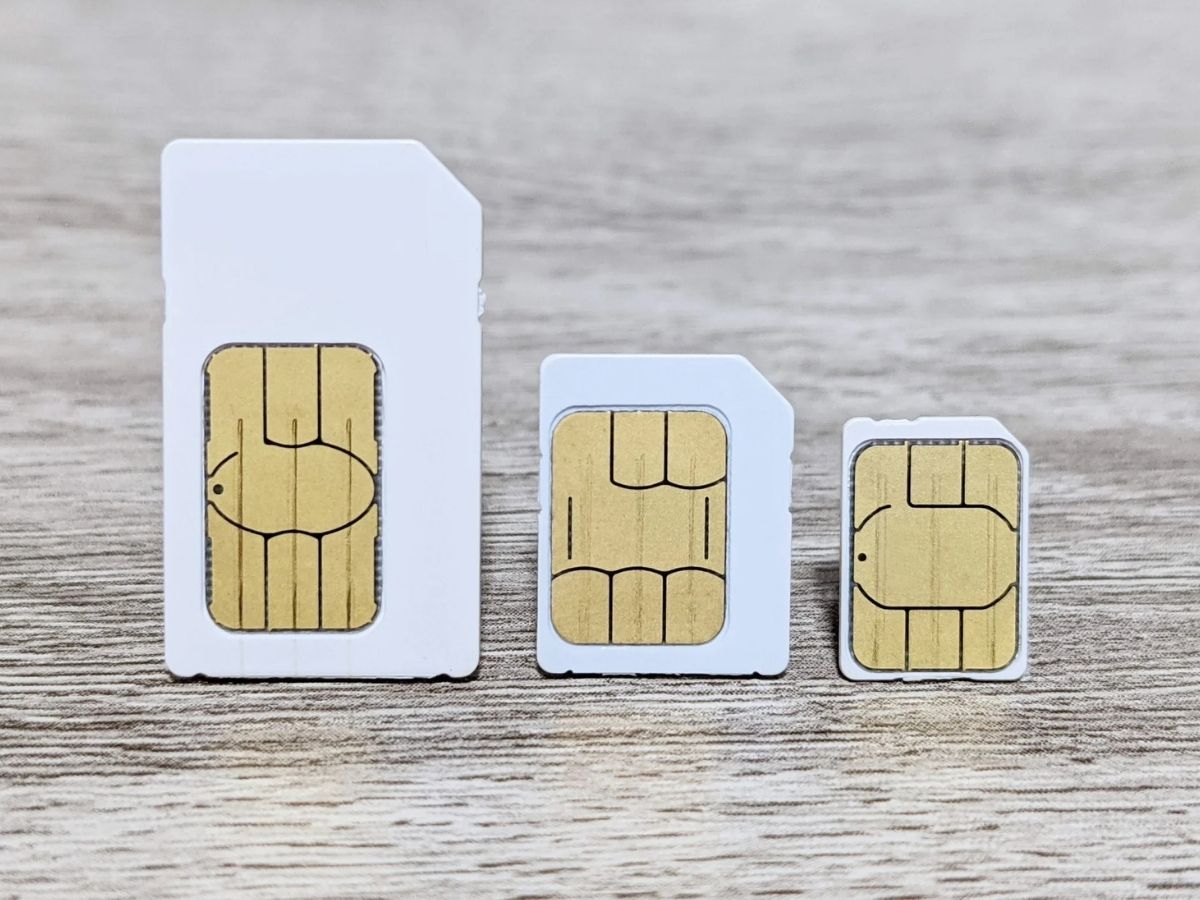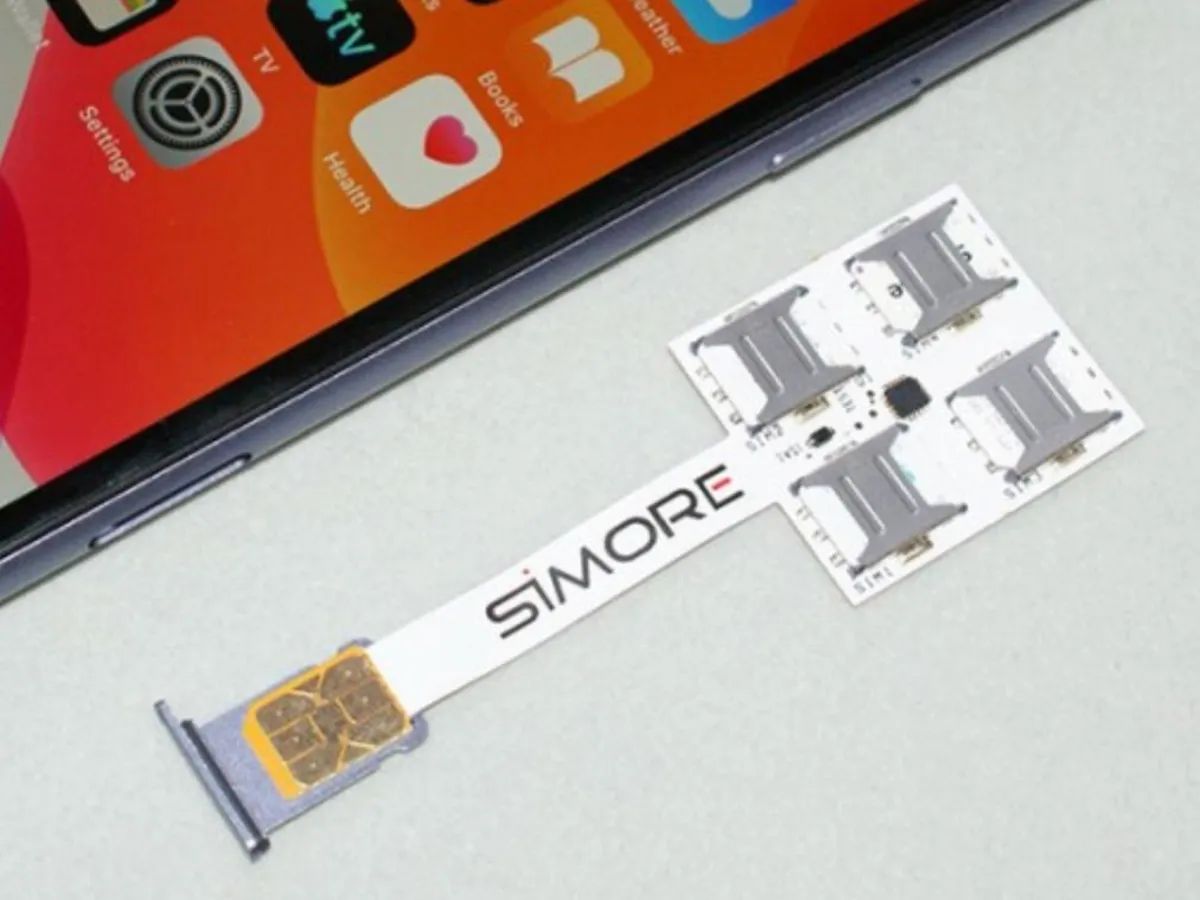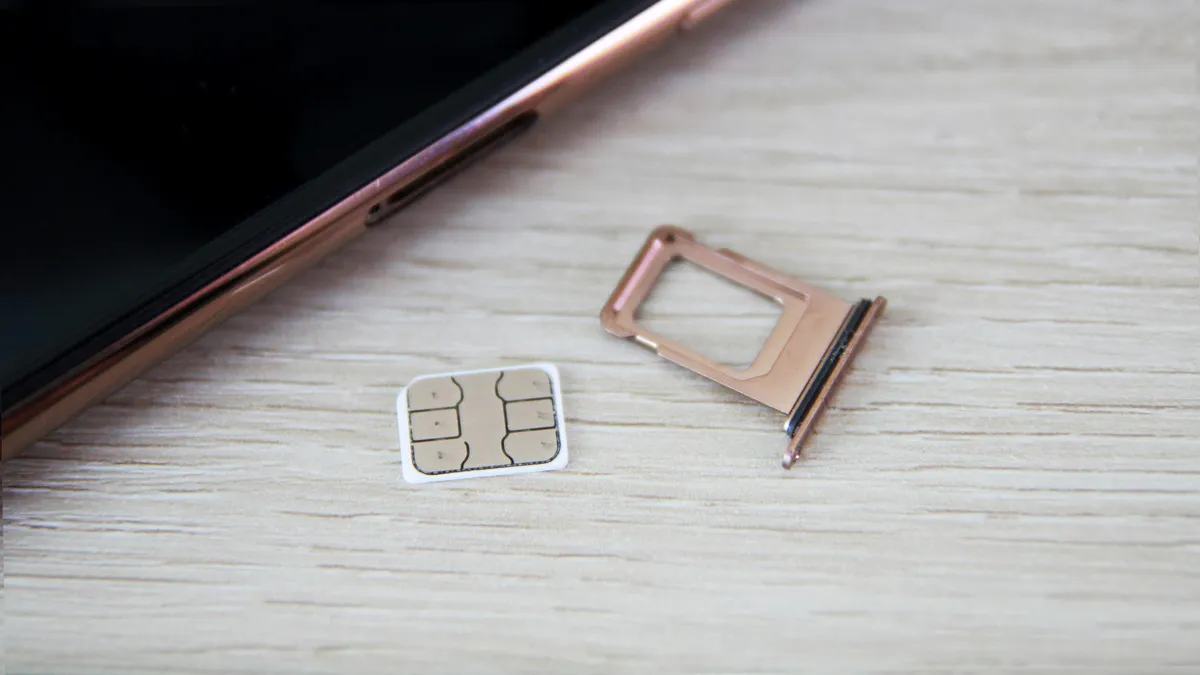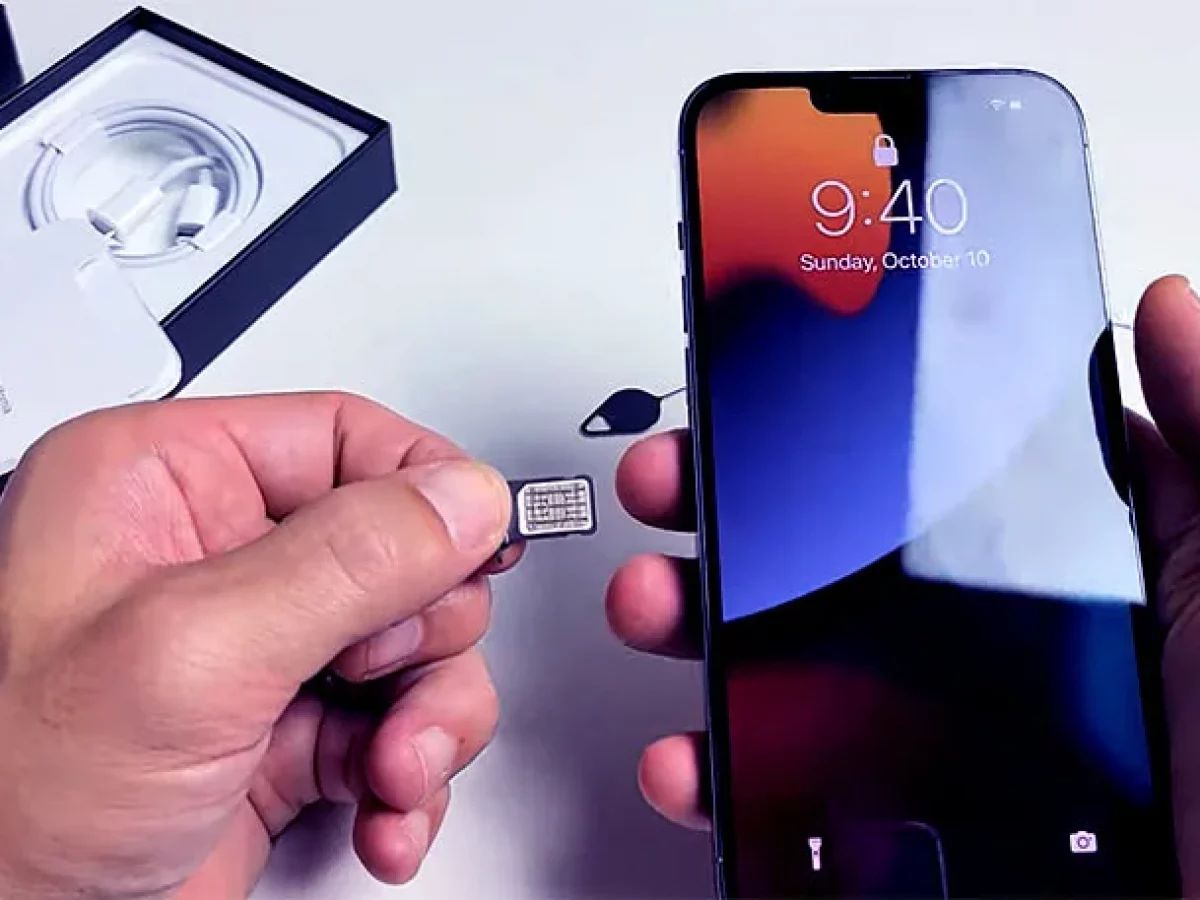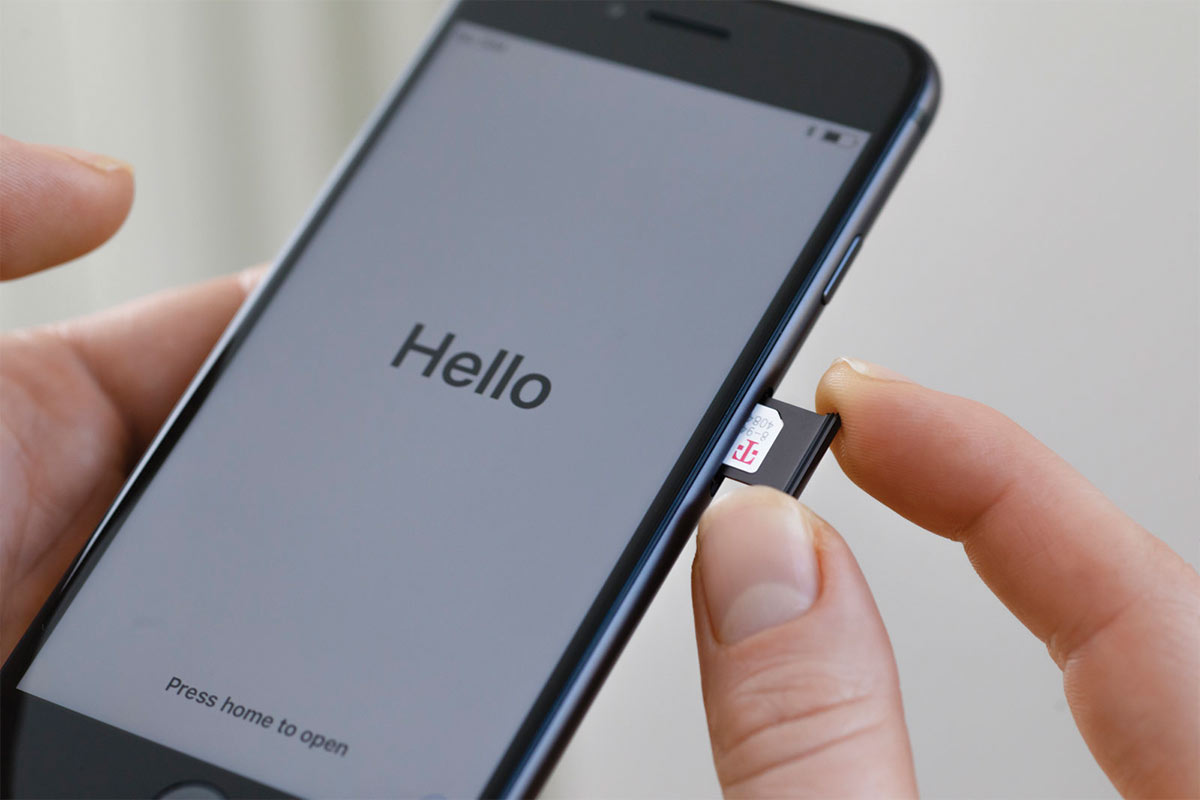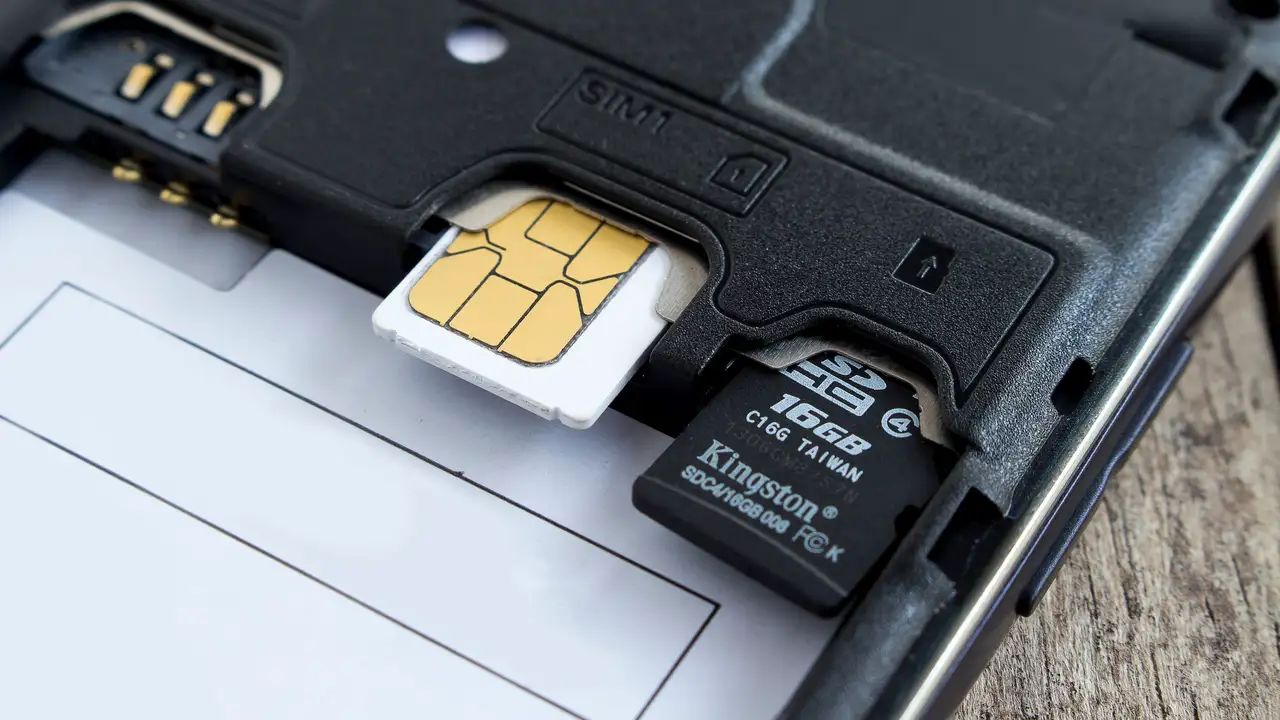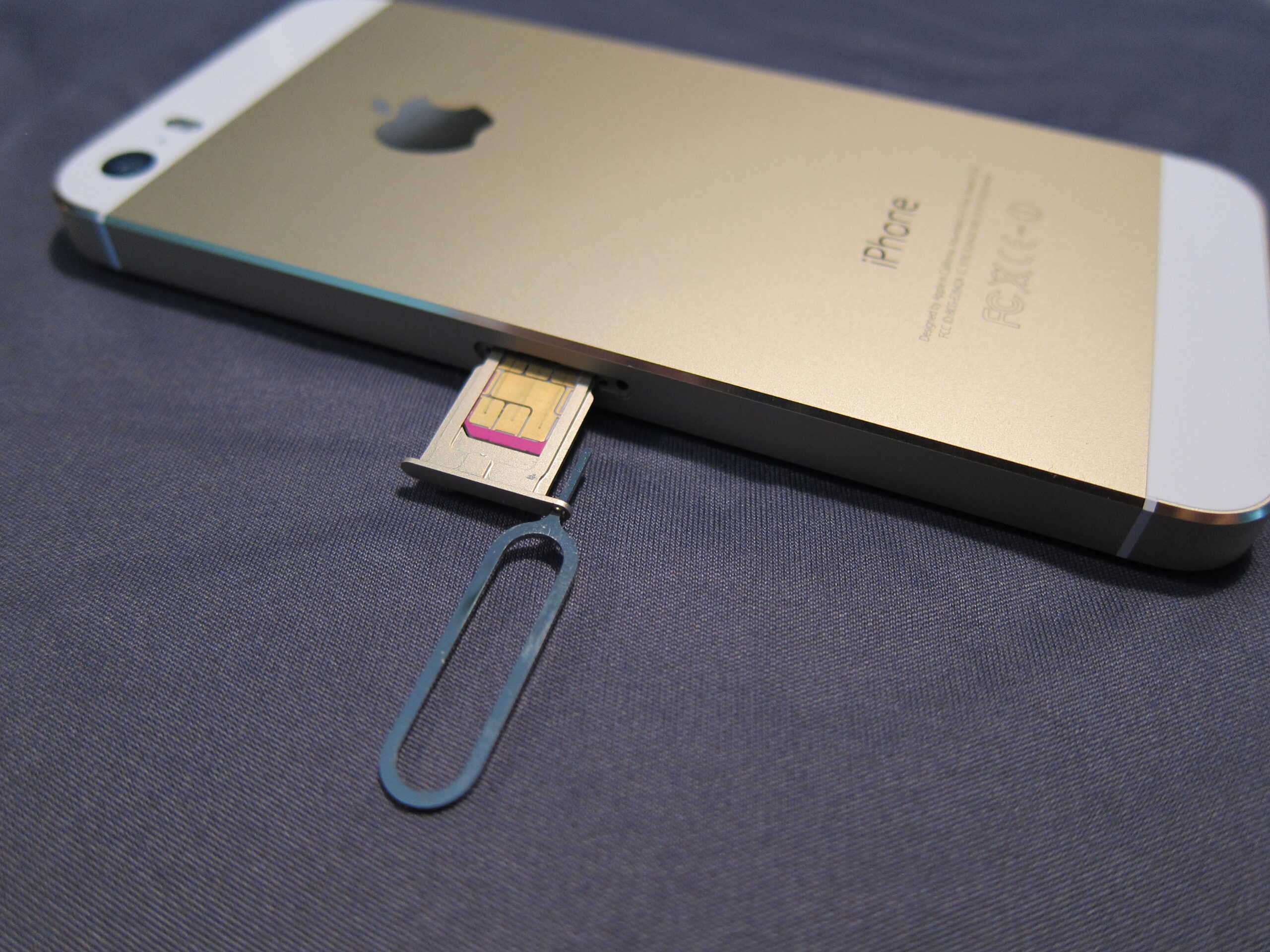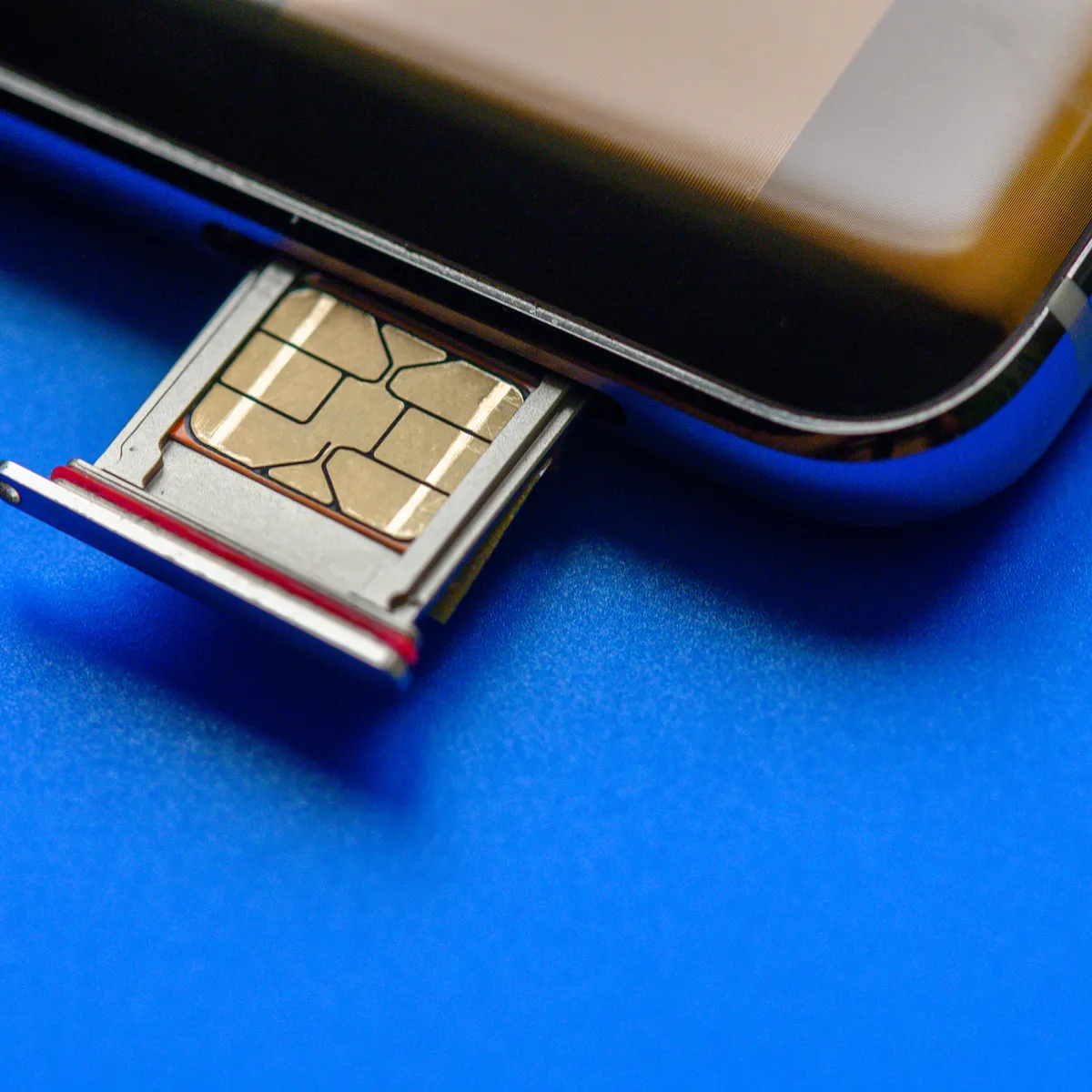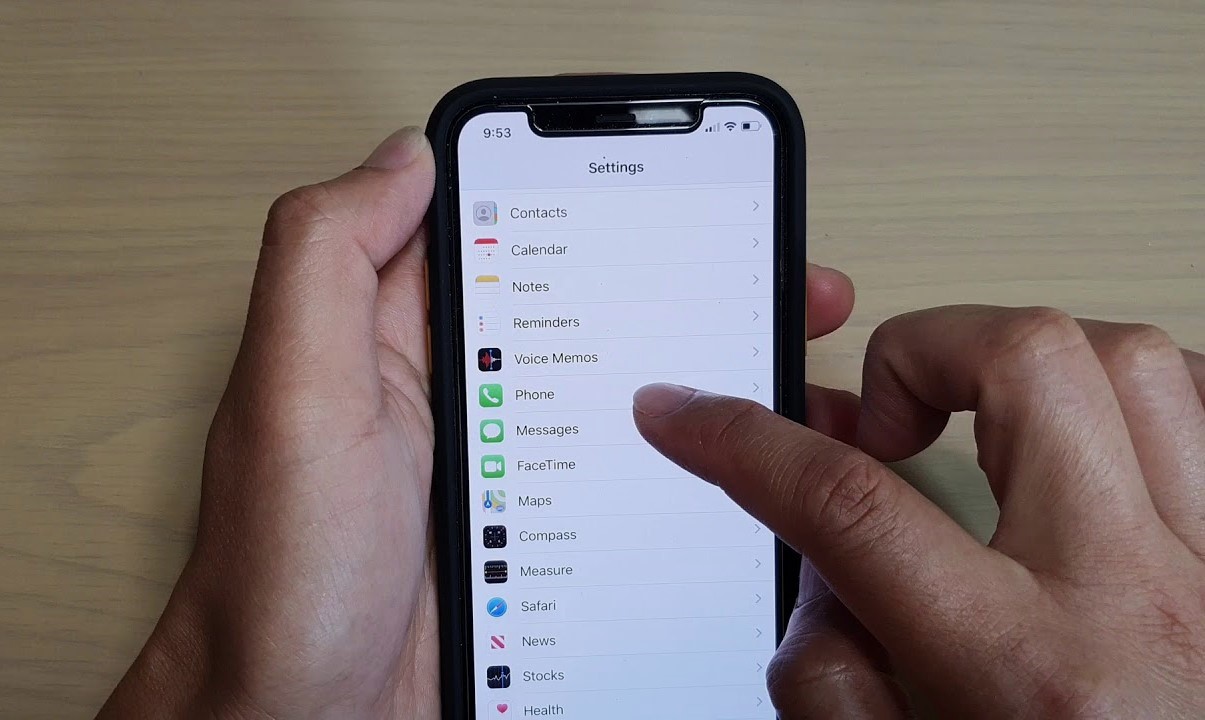Introduction
In today's fast-paced digital world, mobile devices have become an integral part of our daily lives. From staying connected with loved ones to accessing a wealth of information at our fingertips, smartphones have revolutionized the way we communicate and interact with the world around us. At the heart of these powerful devices lies a small yet crucial component known as the SIM card.
The Subscriber Identity Module (SIM) card plays a pivotal role in enabling mobile communication by securely storing essential information such as the user's identity, network credentials, and contact details. This tiny chip, often no larger than a postage stamp, acts as the key that unlocks the door to seamless connectivity, allowing users to make calls, send messages, and access mobile data services.
As the technology behind mobile devices continues to evolve, so do the types of SIM cards designed to meet the diverse needs of users. For iPhone users, understanding the different SIM card options available is essential for ensuring compatibility and optimal functionality with their devices. Whether you're a seasoned iPhone enthusiast or a newcomer to the Apple ecosystem, navigating the realm of SIM card types can be both enlightening and empowering.
In this comprehensive guide, we will delve into the intricacies of SIM cards for iPhones, shedding light on the various types and equipping you with the knowledge to make informed decisions when it comes to selecting the right SIM card for your device. Join us as we embark on a journey to demystify the world of SIM cards, unraveling the differences between standard, micro, and nano SIM cards and providing valuable insights to help you stay connected in the ever-expanding digital landscape.
What is a SIM Card?
A SIM card, short for Subscriber Identity Module, is a small, removable chip that is integral to the functioning of mobile devices, including iPhones. This tiny yet powerful component serves as a secure repository for critical information that facilitates communication and connectivity. At its core, the SIM card holds unique data that identifies the user on the mobile network, enabling them to make calls, send messages, and access mobile data services.
The primary purpose of a SIM card is to authenticate the user's identity to the network, allowing them to utilize the subscribed services. It contains essential details such as the International Mobile Subscriber Identity (IMSI), which is a unique identifier for each individual user, and the authentication key that verifies the user's access to the network. Additionally, the SIM card stores contact information, SMS messages, and other personalized data, ensuring a seamless transition between different mobile devices.
In essence, the SIM card acts as a bridge between the user and the mobile network, enabling the device to establish a secure connection and communicate with other devices. This fundamental role makes the SIM card a vital component in the realm of mobile communication, as it not only facilitates connectivity but also ensures the security and privacy of the user's information.
Furthermore, SIM cards come in various types and sizes, each designed to cater to different devices and form factors. Understanding the distinctions between these SIM card variants is crucial for iPhone users, as it directly impacts the compatibility and functionality of their devices. Whether it's the traditional standard SIM, the compact micro SIM, or the ultra-sleek nano SIM, each iteration represents a step forward in mobile technology, reflecting the ever-evolving landscape of connectivity.
As technology continues to advance, the role of the SIM card remains pivotal, serving as a cornerstone of mobile communication. With its ability to securely store user information and authenticate access to the network, the SIM card stands as a testament to the seamless fusion of innovation and practicality in the modern era of mobile devices.
Types of SIM Cards for iPhones
When it comes to iPhones, users encounter three primary types of SIM cards: the standard SIM card, the micro SIM card, and the nano SIM card. Each variant is uniquely designed to cater to specific iPhone models, reflecting the evolution of mobile technology and the quest for sleeker, more compact devices.
Standard SIM Card
The standard SIM card, also known as a mini-SIM, was the go-to option for older iPhone models. This SIM card features a larger form factor compared to its successors, measuring approximately 25mm x 15mm. While it was once the standard across various devices, including early iPhones, the industry has since transitioned to smaller and more efficient alternatives.
Micro SIM Card
As technology advanced and the demand for slimmer devices grew, the micro SIM card emerged as a more compact solution. Measuring around 15mm x 12mm, the micro SIM represented a significant reduction in size compared to its predecessor. This transition allowed device manufacturers, including Apple, to design thinner and more streamlined iPhones without compromising on essential features.
Nano SIM Card
The nano SIM card represents the pinnacle of miniaturization in the realm of SIM cards. With dimensions of approximately 12.3mm x 8.8mm, the nano SIM is notably smaller than its predecessors, marking a substantial leap in size reduction. This ultra-compact form factor is now the standard for newer iPhone models, enabling sleek and elegant designs while retaining the full functionality of traditional SIM cards.
The transition from standard SIM cards to micro SIM cards and eventually to nano SIM cards underscores the relentless pursuit of innovation in the mobile industry. Apple, in line with this progression, has adopted the nano SIM as the standard for its modern iPhone lineup, reflecting the company's commitment to cutting-edge design and user experience.
Understanding the evolution of SIM card types for iPhones is crucial for users seeking to ensure compatibility and optimal functionality with their devices. As iPhone models continue to evolve, it is essential to stay informed about the latest SIM card standards to seamlessly integrate these iconic devices into our daily lives.
Standard SIM Card
The standard SIM card, also referred to as a mini-SIM, has been a foundational element in the evolution of mobile communication. Initially, this SIM card was the prevalent choice for various devices, including the early iPhone models. Measuring approximately 25mm x 15mm, the standard SIM card represented the conventional form factor that facilitated the connectivity and functionality of mobile devices.
In the era preceding the advent of more compact alternatives, the standard SIM card played a pivotal role in enabling seamless communication and access to mobile services. Its larger size, relative to contemporary SIM cards, made it easily recognizable and compatible with a wide array of devices. This widespread compatibility contributed to its ubiquity in the mobile industry, as it served as the primary means of authenticating users on cellular networks.
The standard SIM card's larger form factor also made it more durable and easier to handle during installation and removal from devices. Its size allowed for a more robust design, which was particularly advantageous in the context of early mobile devices that prioritized sturdiness and longevity.
However, as the demand for slimmer and more compact devices began to rise, the limitations of the standard SIM card's size became apparent. The need for smaller form factors led to the development of the micro SIM card, marking a significant shift in the landscape of SIM card technology.
While the standard SIM card has gradually given way to its more compact successors, its historical significance and foundational role in shaping the mobile industry cannot be understated. The transition from the standard SIM card to its smaller iterations represents a transformative journey driven by the relentless pursuit of innovation and user-centric design.
In the context of iPhone users, understanding the legacy of the standard SIM card provides valuable insights into the evolution of mobile technology. It underscores the iterative nature of device design and the continuous quest for enhanced user experiences, ultimately shaping the seamless integration of iPhones into our daily lives.
As we reflect on the legacy of the standard SIM card, we gain a deeper appreciation for the strides made in mobile communication, paving the way for the sleek and sophisticated devices that define the modern era of connectivity.
Micro SIM Card
The introduction of the micro SIM card marked a significant milestone in the evolution of mobile communication technology, particularly in the context of iPhone compatibility and design. As smartphones embraced slimmer and more streamlined form factors, the need for a smaller SIM card became increasingly apparent. The micro SIM card, measuring approximately 15mm x 12mm, represented a substantial reduction in size compared to its predecessor, the standard SIM card.
The transition to the micro SIM card not only catered to the demand for sleeker devices but also facilitated the development of more compact and efficient internal components within smartphones, including iPhones. This shift in SIM card size allowed device manufacturers, including Apple, to allocate additional space for innovative features and advancements while maintaining the essential functionality of the SIM card.
For iPhone users, the adoption of the micro SIM card brought about newfound possibilities in device design and user experience. The smaller form factor of the micro SIM card seamlessly integrated with the increasingly refined and elegant design language of iPhones, contributing to the creation of more visually appealing and ergonomic devices.
Furthermore, the micro SIM card's reduced size did not compromise its functionality or security features. It retained the capability to securely store user information, authenticate access to the network, and facilitate seamless communication, aligning with the stringent standards of reliability and performance upheld by Apple.
The widespread adoption of the micro SIM card across various iPhone models exemplifies the industry's commitment to innovation and user-centric design. This transition not only reflected the technological advancements in SIM card miniaturization but also underscored the continuous evolution of mobile devices, shaping the way users interact with their iPhones on a daily basis.
As iPhone users navigate the dynamic landscape of mobile technology, understanding the pivotal role of the micro SIM card provides valuable insights into the intricate symbiosis between form factor, functionality, and user experience. It highlights the seamless convergence of technological innovation and user-centric design, ultimately enhancing the integration of iPhones into our interconnected world.
In essence, the micro SIM card stands as a testament to the relentless pursuit of excellence in mobile communication, contributing to the ongoing refinement and sophistication of iPhones while empowering users to embrace the future of connectivity.
Nano SIM Card
The nano SIM card represents a remarkable leap in the miniaturization of SIM card technology, embodying the relentless pursuit of sleek and efficient design in the realm of mobile communication. With dimensions of approximately 12.3mm x 8.8mm, the nano SIM card stands as the epitome of compactness, underscoring the industry's commitment to optimizing space within devices, particularly iPhones.
The transition to the nano SIM card heralded a new era of design possibilities for smartphones, including the iconic iPhone lineup. Its significantly reduced size not only facilitated the creation of thinner and more elegant devices but also paved the way for innovative internal configurations, enabling enhanced features and functionalities within the constrained space of modern smartphones.
For iPhone users, the adoption of the nano SIM card represents a pivotal shift in device compatibility and user experience. As Apple embraced the ultra-compact form factor, it revolutionized the design language of iPhones, allowing for seamless integration of the SIM card slot into the device's sleek profile. This integration contributed to the creation of more visually striking and ergonomic iPhones, aligning with Apple's unwavering commitment to both form and function.
Despite its diminutive size, the nano SIM card retains the full spectrum of capabilities inherent to traditional SIM cards. It securely stores user information, facilitates network authentication, and enables seamless communication, all while adhering to the stringent standards of reliability and security upheld by Apple. This seamless convergence of compactness and functionality underscores the industry's dedication to delivering a seamless and secure mobile experience for iPhone users.
The widespread adoption of the nano SIM card across the modern iPhone lineup exemplifies a paradigm shift in mobile technology, encapsulating the spirit of relentless innovation and user-centric design. This transition not only reflects the technological advancements in SIM card miniaturization but also underscores the continuous evolution of mobile devices, shaping the way users interact with their iPhones on a daily basis.
In essence, the nano SIM card stands as a testament to the unyielding pursuit of excellence in mobile communication, contributing to the ongoing refinement and sophistication of iPhones while empowering users to embrace the future of connectivity.
How to Choose the Right SIM Card for Your iPhone
When it comes to selecting the right SIM card for your iPhone, several factors come into play, each influencing the compatibility and functionality of your device. Whether you are upgrading to a new iPhone or switching carriers, making an informed decision regarding the SIM card is essential for a seamless and optimized mobile experience.
Consider Your iPhone Model
The first step in choosing the right SIM card for your iPhone is to identify your device model. Different iPhone models may require specific SIM card types, such as standard, micro, or nano SIM cards. Ensuring compatibility with your iPhone model is crucial, as using an incompatible SIM card can lead to connectivity issues and hinder the device's performance.
Check Carrier Compatibility
Before acquiring a new SIM card, it is important to verify its compatibility with your preferred mobile carrier. Some carriers may have specific requirements or offer SIM cards tailored to their network configurations. By consulting with your carrier or reviewing their guidelines, you can ensure that the SIM card aligns with the network standards and protocols, enabling seamless connectivity and access to mobile services.
Evaluate Future-Proofing Options
As technology continues to advance, it is beneficial to consider future-proofing options when selecting a SIM card for your iPhone. For instance, if you plan to upgrade to a newer iPhone model in the future, opting for a nano SIM card, which is the standard for modern devices, can streamline the transition and eliminate the need for a new SIM card with each device upgrade.
Assess International Compatibility
If you frequently travel internationally, assessing the international compatibility of the SIM card is essential. Some SIM cards are designed to facilitate international roaming and may offer cost-effective plans for global usage. By choosing a SIM card with robust international compatibility, you can maintain seamless connectivity and access mobile services during your travels without encountering compatibility issues.
Seek Professional Assistance
In cases where uncertainty arises or specific requirements need to be addressed, seeking professional assistance from authorized Apple stores or carrier outlets can provide valuable insights and guidance. These experts can offer tailored recommendations based on your individual needs and ensure that the chosen SIM card aligns with your iPhone model and usage patterns.
By considering these factors and making an informed decision, you can choose the right SIM card for your iPhone, enabling optimal compatibility, seamless connectivity, and a streamlined mobile experience tailored to your specific needs and preferences.
Conclusion
In the dynamic landscape of mobile technology, the evolution of SIM cards for iPhones mirrors the relentless pursuit of innovation and user-centric design. From the standard SIM card to the micro SIM card and the nano SIM card, each iteration represents a transformative leap in miniaturization, compatibility, and seamless integration with iPhone models. As the industry continues to push the boundaries of connectivity and device design, understanding the nuances of SIM card types is essential for iPhone users seeking to optimize their mobile experience.
The legacy of the standard SIM card serves as a testament to the foundational role it played in shaping the early era of mobile communication. Its larger form factor not only facilitated widespread compatibility but also laid the groundwork for subsequent advancements in SIM card technology. The transition to the micro SIM card marked a pivotal shift, allowing for slimmer and more elegant iPhone designs while retaining essential functionality. Finally, the advent of the nano SIM card epitomized the industry's commitment to compactness and efficiency, enabling seamless integration with modern iPhone models and setting new standards for sleek device design.
As iPhone users navigate the intricacies of SIM card selection, considerations such as device compatibility, carrier requirements, future-proofing, and international usability come to the forefront. By making informed decisions and leveraging professional guidance when needed, users can ensure that their chosen SIM card aligns with their specific needs and usage patterns, enabling a seamless and optimized mobile experience.
Ultimately, the journey of SIM cards for iPhones reflects the harmonious convergence of technological innovation and user empowerment. It underscores the industry's dedication to refining connectivity and device design, empowering users to embrace the full potential of their iPhones in an interconnected world. As we look to the future, the evolution of SIM cards continues to shape the landscape of mobile communication, driving the seamless integration of iPhones into our daily lives and propelling the relentless pursuit of excellence in the realm of connectivity.







